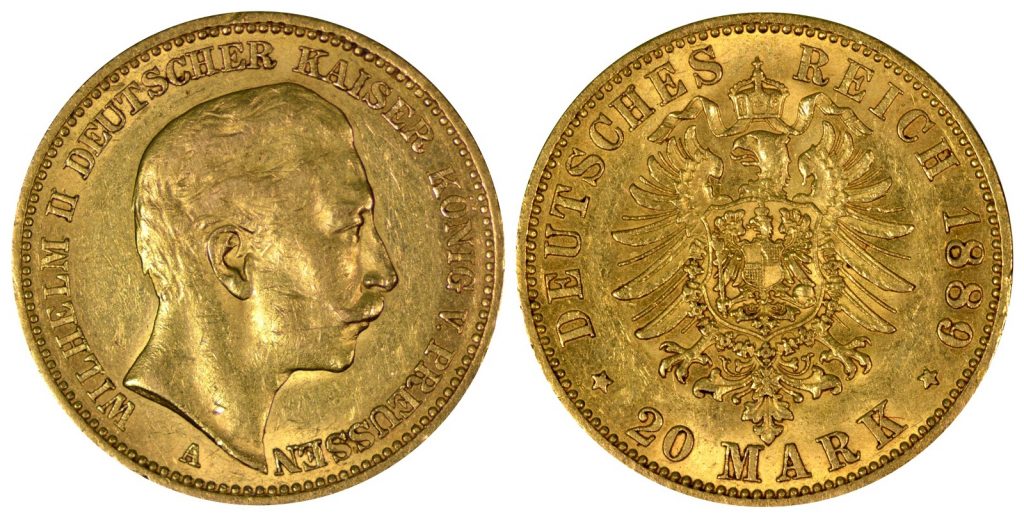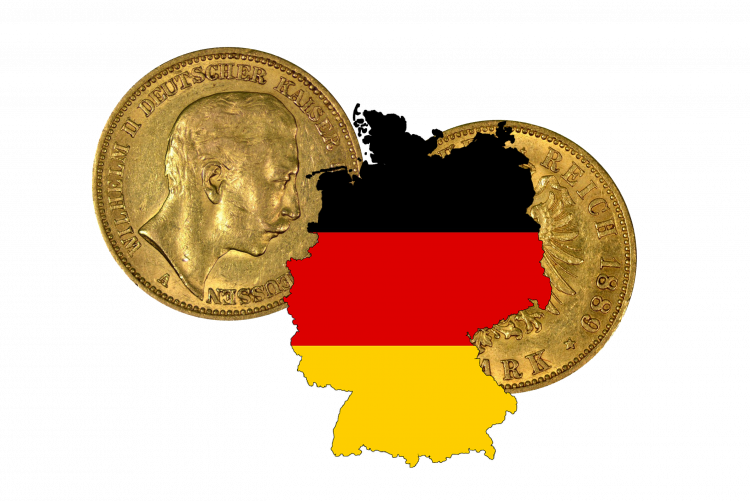No.7: 20 Gold Marks
In 1871, following the Franco-Prussian war, the two nations were united, resulting in the creation of the German Empire. Its first measure was indeed the vote on the Prussian monetary law in 1871 introducing the mark based on the strict gold standard as the Empire’s single currency. Then, in 1873, German monetary law decreed that the German gold mark was now the reserve currency. After England and Portugal, Germany was the third country to base its monetary system on the gold standard. The gold mark played a crucial role in the German industrial revolution by facilitating trade. It is the symbol of German manufacturing excellence with its fine gold alloy containing 90% gold.
Many mints have issued this coin, therefore each coin has a letter representing the issuing mint. For instance, an “A” for Berlin “B” for Hanover, “C” for Frankfurt, “D” for Munich, “E” for Dresden, “F” for Stuttgart, “G” for Karlsruhe, “H” for Darmstadt and “J” for Hamburg.

The 20 Mark gold weighs 7.96 grams including 7.16 grams of gold, and measures 22.5 mm in diameter.
Description
The obverse depicts the portrait of the German king and emperor who was reigning during the year of issue. The most common German kings and emperors are William I, Frederick III, and William II. Around the portrait of kings and emperors are the inscriptions “Deutscher Kaiser König V. Preussen” (German Emperor King V. Prussia), and below it is the mint mark.
On the reverse side, we can see an imperial crown, under which stands an eagle with the necklace of the Order of the Black Eagle. The bird’s chest is engraved with a shield carrying the coat of arms of the Hohenzollern. It was a European royal family who ruled as emperors over Germany and as kings over Prussia and Romania. The face value is located under the coat of arms. The top edge reads “Deutsches Reich” and the year of issue is on the right of the design.
On the edge of the coin, we can read “Gott Mit Uns” (God is with us).
In 1914, the First World War began. As a result, the German Central Bank abolished the gold standard in favor of German paper money (Papiermark).
Previous article: Gold Napoléon (6/15)
Next article: Gold Swiss Franc (8/15)

